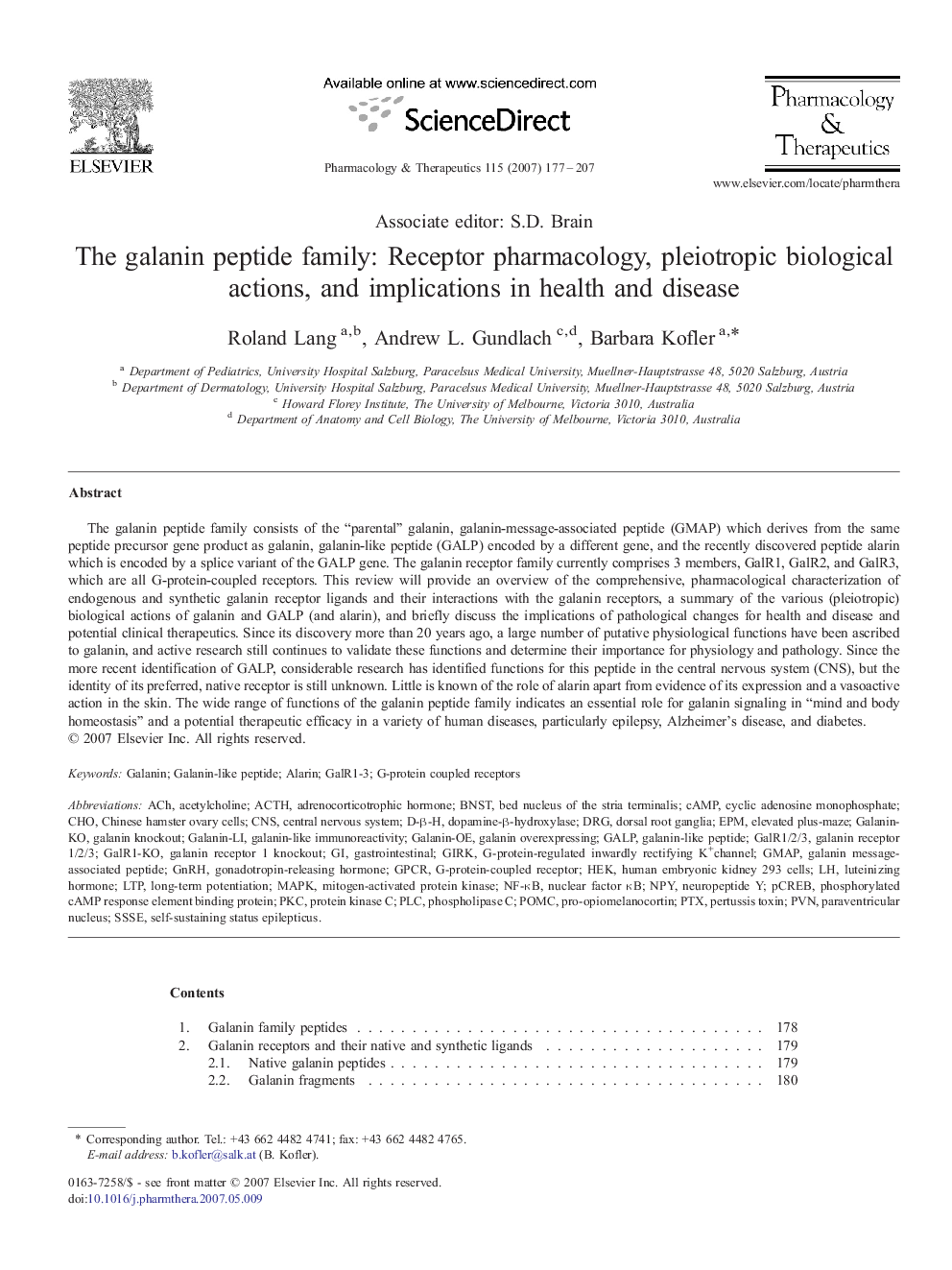| کد مقاله | کد نشریه | سال انتشار | مقاله انگلیسی | نسخه تمام متن |
|---|---|---|---|---|
| 2564166 | 1127615 | 2007 | 31 صفحه PDF | دانلود رایگان |

The galanin peptide family consists of the “parental” galanin, galanin-message-associated peptide (GMAP) which derives from the same peptide precursor gene product as galanin, galanin-like peptide (GALP) encoded by a different gene, and the recently discovered peptide alarin which is encoded by a splice variant of the GALP gene. The galanin receptor family currently comprises 3 members, GalR1, GalR2, and GalR3, which are all G-protein-coupled receptors. This review will provide an overview of the comprehensive, pharmacological characterization of endogenous and synthetic galanin receptor ligands and their interactions with the galanin receptors, a summary of the various (pleiotropic) biological actions of galanin and GALP (and alarin), and briefly discuss the implications of pathological changes for health and disease and potential clinical therapeutics. Since its discovery more than 20 years ago, a large number of putative physiological functions have been ascribed to galanin, and active research still continues to validate these functions and determine their importance for physiology and pathology. Since the more recent identification of GALP, considerable research has identified functions for this peptide in the central nervous system (CNS), but the identity of its preferred, native receptor is still unknown. Little is known of the role of alarin apart from evidence of its expression and a vasoactive action in the skin. The wide range of functions of the galanin peptide family indicates an essential role for galanin signaling in “mind and body homeostasis” and a potential therapeutic efficacy in a variety of human diseases, particularly epilepsy, Alzheimer's disease, and diabetes.
Journal: Pharmacology & Therapeutics - Volume 115, Issue 2, August 2007, Pages 177–207